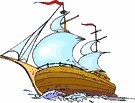
Worksheets and No Prep Teaching Resources
Explorers
Lewis and Clark
(1804-1806)
 Worksheets and No Prep Teaching Resources Explorers Lewis and Clark (1804-1806) |
Lewis, Clark, Sacagawea y Pomp |
| Print Lewis, Clark, Sacagawea y Pomp |
| Quickly Print: PDF (2 columns per page) |
|
| Quickly Print: PDF (full page) |
| Quickly Print: HTML |
|
Lewis, Clark, Sacagawea y Pomp
By Sharon Fabian Translation by Alba Estupinan |

|
 |
Create Weekly Reading Books
Prepare for an entire week at once! |
 |
Explorers
|
 |
Lewis and Clark
|
 |
Social Studies
|
 |
United States
|
|
|
|
|
 | Fifty States Theme Unit |
 |
Document Based Activities |
|
Back to School Graphic Organizers Alphabet Worksheets Sight Words Math Worksheets Mazes 50 States Monthly Themes January February March April May June July August September October November December |
Fractions Place Value Time and Calendar Money Earth Day Solar System Analogies Nouns Following Directions Listening Capitalization Cursive Writing Patterns and Sequencing Dinosaurs All About Me Kindergarten First Grade Second Grade Third Grade Fourth Grade Fifth Grade Sixth Grade |
Multiplication Division Main Idea Cause and Effect Measurement Decimals Rounding Order of Operations Verbs Community Helpers Adjectives Plants Grammar Addition and Subtraction Contractions Bulletin Board Ideas Word Searches Crossword Puzzles Printable Puzzles Reading Comprehension Reading Skills English Language Arts |